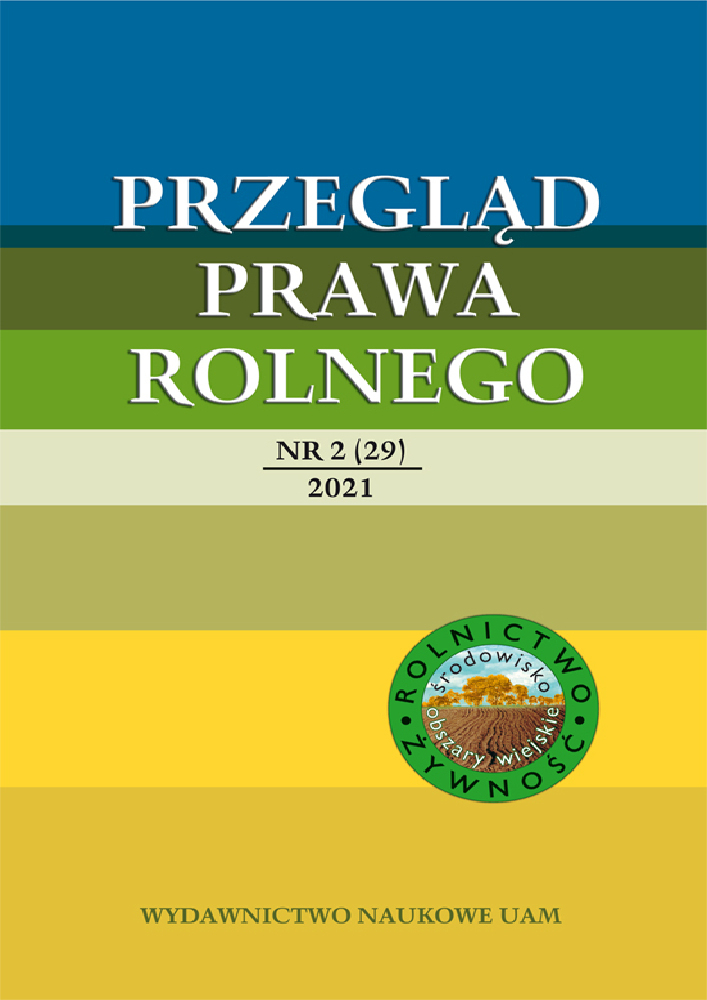Abstract
Agriculture was the driving force that provided the opportunity for the development of human civilisation; food surpluses made it possible to develop non-agricultural activities (priest and warrior classes) which resulted in the emergence of economic stratification continuing up till today (workers and annuitants, the rich and the poor). However, despite the fact that the means of transport are readily available, the distribution of food among all mankind is still inadequate. The European legislature in the last twenty years and the evolutionary trends of international trade have gradually marked out a declared and conscious integration between product rules and production rules, between the life cycle and the market, increasing the role of business in the creation of a regulatory and integrated model which perceives and understands the essential and growing importance attached to decisions that place a premium on environmental integrity and the correct use of natural resources. Nevertheless, climate change and the need to change the development model are moving in the direction of a drastic reduction in livestock farming in order to reduce methane and CO2 production and to the replacement of meat with laboratory products containing proteins presumably derived from meat particles that have never lived in a cowshed; to the strong revalorization of forests and their cultivation in dry or arctic areas or in very high mountains in order to trap CO2; to the development of herbaceous plants modified to produce not only carbohydrates but also vitamins and proteins. In short, we are moving towards a new agricultural revolution in which the environmental objective will also be accompanied by a productive one: man will support tree crops and some herbaceous crops, will drastically reduce animal husbandry, giving rise to a new agriculture, more efficient from the environmental point of view, but also better adapted to achieve the coupling of the first sector with the question of mankind’s survival, trying to reduce its invasiveness and to rebuild the planet capable of surviving our invasive presence.
References
Cipolla C.M. (1959), Il declino economico dell’Italia, in: C.M. Cipolla (a cura di), Storia dell’economia italiana, Torino.
Cipolla C.M. (1974), Storia economica dell’Europa pre-industriale, Bologna.
Dumezil G. (1955), Juppiter, Mars, Quirinus, Torino.
Grossi P. (2014), Locatio ad longum tempus, Napoli.
Harari Y.N. (2019), Sapiens – Da animali a dei (breve storia dell’umanità), Firenze.
Jones P. (1976), L’Italia, in: Storia economica Cambridge, vol. I: L’agricoltura e la società rurale nel Medioevo, Torino.
Pettinato G. (1974), La Saga di Gilgamesh, Milano.
Slicher Van Bath B.H. (1972), Storia agraria dell’Europa occidentale (500–1850), Torino.
License
Copyright (c) 2021 Luigi Costato

This work is licensed under a Creative Commons Attribution-ShareAlike 4.0 International License.





